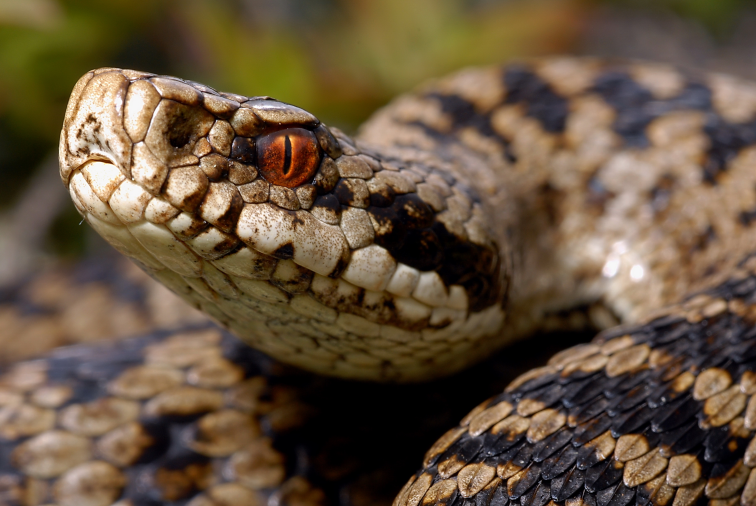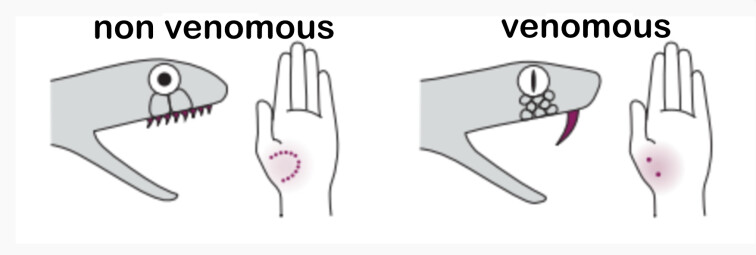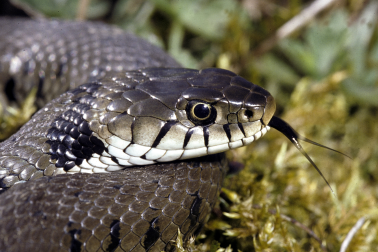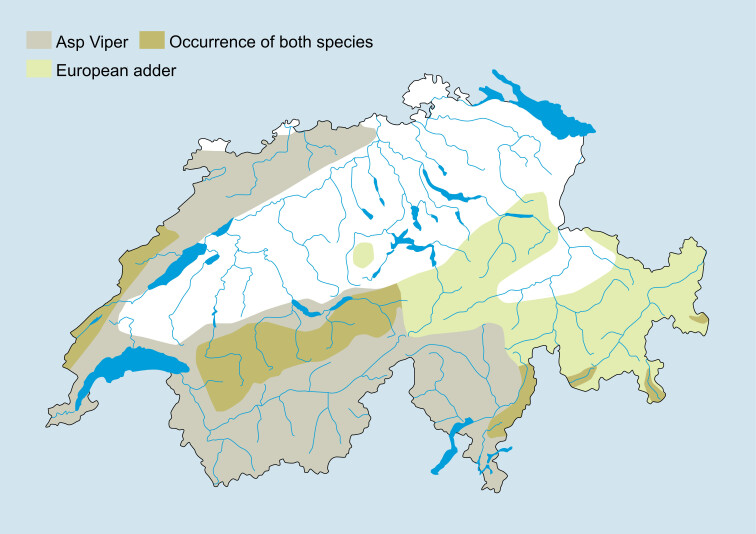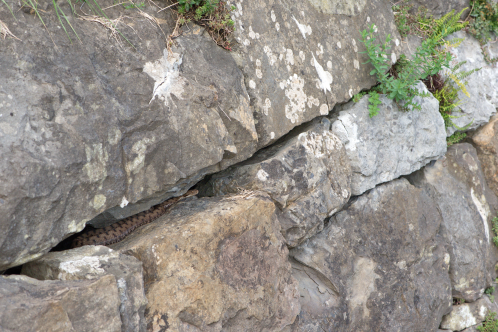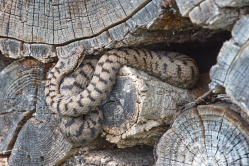Snakes are extremely shy and they only bite people in self-defence. Venomous snakebites are very rare in Switzerland. After a snakebite it is particularly important to stay calm and not panic. Go to the nearest hospital. Good treatment for snakebites is readily available in Switzerland. Read more here.
“I’ve been bitten by a snake” Part II
Was it a venomous snake?
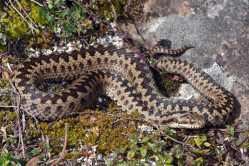
Usually upon seeing a snake or being bitten you immediately want to know whether it could be venomous. The bite marks and where it happened provide vital clues.
Identifying features of indigenous snakes
There are two species of venomous snakes native to Switzerland and both are types of vipers: the asp viper (Vipera aspis) and the European adder (Vipera berus). All other native species of snakes in Switzerland are non-venomous colubrids or not even snakes, such as the completely harmless slow worm (a type of lizard), which are often mistaken for snakes. Just like the native vipers, some of the colubrids may also bite humans in self-defence.
The image above shows some of the typical distinguishing features of non-venomous colubrids and venomous European vipers: Head shape, eyes, scales, fangs and bite marks.
Typical bite area
In practice, the bite marks are the most important after a snakebite as once the snake has bitten you, the wound is the only lasting sign of the encounter. Snakes inject their venom with their fangs. For both species of viper, these fangs usually leave behind a typical wound in the form of two bite marks on the skin. These are small, round, red and are about 1 cm apart (less in young animals). As described in Part I, the bite could be dry and relatively harmless or you could develop symptoms of varying severity and speed.
Classifying the snake according to the different distinguishing features should be limited primarily to observing them in a terrarium or looking at pictures. Modern technology and the zoom function on mobile phones makes it possible to take a photo of the animal from a safe distance without disturbing it. It is neither sensible nor advisable to hunt, hassle, or even kill a snake for a photo (even for identification). It is dangerous and strictly prohibited. Medical consultation is vital for every snakebite. And it is not important for hospital treatment whether you know if you’ve been bitten by an asp viper or European adder. This also applies to the use of antivenom (antidote) if needed.
Distribution of indigenous venomous snakes
The distribution of indigenous venomous snakes, their habitat and lifestyle is an important indication of whether a snake is venomous or not.
If someone in the city of Zurich wakes up with two red, itchy spots on their leg and they look about a centimetre apart, there definitely wasn’t a venomous snake in their bed. Even if they had seen something snakelike the day before in a garden pond. Switzerland’s Coordination Centre for the Protection of Amphibians and Reptiles (karch) has detailed knowledge of the distribution of venomous snakes. These can mainly be found on the sunny slopes of the Jura Mountains and the Alps. According to Andreas Meyer, scientific employee at info fauna karch, the above map shows a rather generous range and distribution for the two venomous snake species.
A chance sighting of one of the two venomous snakes would be most likely in this stone wall when hiking in the Alps – and even then it would be a rare occurrence.
Further information
Koordinationsstelle für Amphibien- und Reptilienschutz in der Schweiz (karch):
karch.ch oder www.infofauna.ch
Karch, the Centre for the protection of amphibians and reptiles, provides fact sheets of reptiles including the native venomous snake species the asp viper and the European adder (German, French and Italian), further information and useful articles such as “Snake in the garden – what do I do?” or how to deal with a snake phobia “Scared of snakes? Not me”.
Do you have any questions about the presence of venomous snakes native to Switzerland or a possible sighting?
Beratungsstelle Reptilien (karch):
e-mail: contact@infofauna.ch
Telephone: +41 32 560 31 10 (Office hours 9–11.30 and 14–16)
July 2024


